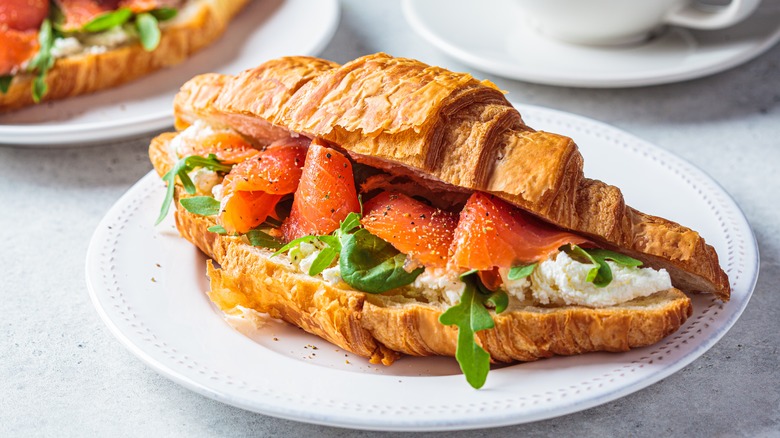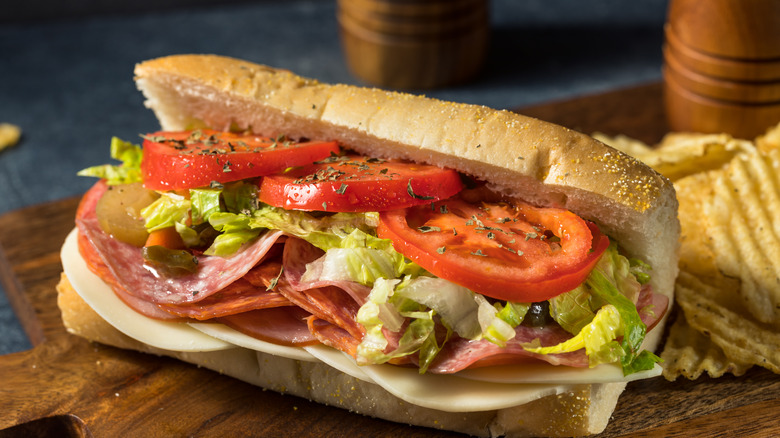The Way You Stack Your Sandwich Matters More Than You Might Think
While the history of the sandwich is hotly contested (was it invented because of the Earl of Sandwich's gambling habit, or does it trace back to Hillel the Elder during the first century B.C.?), Americans run on sandwiches. Speaking to The New York Times, Bee Wilson, food historian and author of "Sandwich: A Global History," claims that sandwiches are the quintessential food for workaholic Americans since it only requires one hand to eat.
One thing we worker-bees can all agree on — there is nothing worse than a Sad Desk Sandwich. Either it's an under-stuffed dullard with a few cuts of meat slapped between slices of commercial bread. Or, it's a magnificent flavor bomb, but with bread so soggy it's sagged into a pile of mush by lunchtime. If a sandwich requires a fork to eat, is it still a sandwich?
To create a sandwich that can withstand a few hours in a lunch bag, Eater believes it starts with a drier bread. Choose something with a robust crust like a baguette that doesn't wither under the pressure of the wetter ingredients. The Kitchn advocates for toasting the bread first, since the dried-out slice acts as a wetness repellent.
The packaging is another way to circumvent a soggy sando, explains Eater. Opt for breathable materials like parchment or foil (plastic holds in moisture). Or, for a more eco-friendly to-go alternative, wrap the sandwich in a paper towel before tucking it into a reusable container.
Why the sandwich stack matters
Ultimately, according to Eater, a great sandwich needs solid construction. They recommend layering the cold cuts on the bottom and putting items like tomatoes, peppers, and pickles on top. While the wetter items will touch the top piece of bread, gravity draws their liquid down. That first layer of meat and cheese will block the fluid from the bottom slice, keeping the sandwich dry.
Eater also points out that items like vinegar, mustard, and ketchup soak into the bread, making it soggy. Oil-based spreads like mayo sit on top, keeping the bread dry. But rather than sacrifice flavor, carry the water-based condiments on the side and add them to the sammy right before you eat.
This theory — keeping items separate to maintain the integrity of the sandwich — is similar to the one McDonald's touted for their McDLT. As Serious Eats explains, this ultimate '90s sando packed the burger separate from the lettuce, tomato, and mayo. This kept the veggies from wilting under the heat of the cooked meat. While ultimately the burger couldn't deliver the promised division, McDonald's had it right. Warm ingredients are a mush-magnate, The Kitchn points out. To give a hot sandwich staying power, let the cooked ingredients cool completely before packing between the bread slices.

